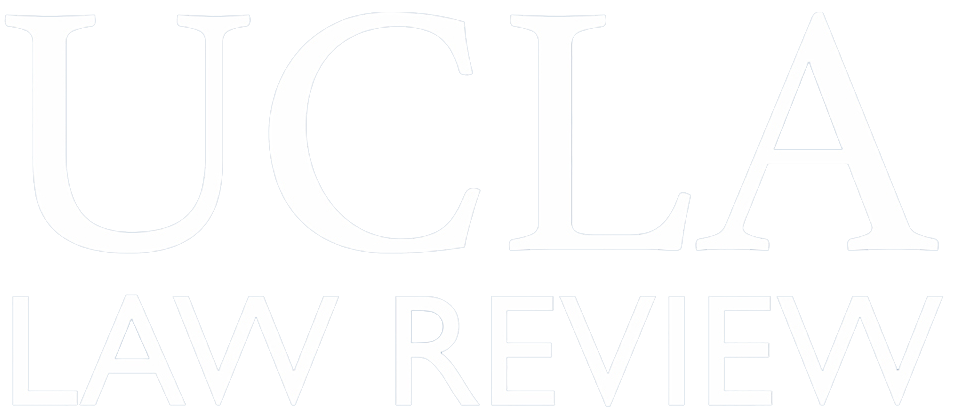“Open government” used to carry a hard political edge: It referred to politically sensitive disclosures of government information. The phrase was first used in the 1950s in the debates leading up to passage of the Freedom of Information Act. But over the last few years, that traditional meaning has blurred, and has shifted toward open technology. Open technologies involve sharing data over the...
The Pseudo-Elimination of Best Mode: Worst Possible Choice?
Even as it is hailed as the most significant legislative change to patent law in a half-century, some of the changes the U.S. Congress made in the Leahy-Smith America Invents Act are surprisingly equivocal. One provision captures this aspect of the Act particularly well: the pseudo-elimination of the best mode requirement. In this Essay, we develop the concern that by equivocating on the best...
Welcome, Volume 60 Staff!
The Board of Editors of the UCLA Law Review welcomes the 53 staff members who joined the Law Review over summer 2012!
The list of new staff members for Volume 60, in addition to the Board, is available on our Current Members page.
Shocking the Conscience: What Police Tasers and Weapon Technology Reveal About Excessive Force Law
Since Graham v. Connor, the U.S. Supreme Court’s 1989 opinion establishing the Fourth Amendment standard for assessing whether a police officer’s use of force was unconstitutionally excessive, the law has slowly developed through a body of narrow and fact-specific precedents that guide judges’ excessive force and qualified immunity analyses. Recently, the Ninth Circuit—the source of many of the...
Credit CARD Act II: Expanding Credit Card Reform by Targeting Behavioral Biases
Three years ago, the U.S. Congress passed the Credit CARD Act of 2009. This ambitious piece of consumer protection legislation sought to relieve consumer debt burdens by targeting credit card industry abuses and providing new disclosures. Congress acknowledged that the legislation would not help individuals who borrow irresponsibly on their credit cards, implicitly assuming that it could not...
The Supreme Court’s Regulation of Civil Procedure: Lessons From Administrative Law
In this Article, we argue that the U.S. Supreme Court should route most Federal Rules of Civil Procedure issues through the notice-and-comment rulemaking process of the Civil Rules Advisory Committee instead of issuing judgments in adjudications, unless the Court can resolve the case solely through the deployment of traditional tools of statutory interpretation. While we are not the first to...
Techniques for Mitigating Cognitive Biases in
Fingerprint Identification
Since the U.S. Supreme Court’s holdings in Daubert v. Merrell Dow Pharmaceuticals, Inc. and Kumho Tire Co. v. Carmichael, which articulated that judges have a gatekeeping responsibility to ensure that all expert testimony is sufficiently reliable, academic critics have reviewed forensic science evidence with greater scrutiny. While fingerprint identification has historically been touted as...
Implicit Bias in the Courtroom
Given the substantial and growing scientific literature on implicit bias, the time has now come to confront a critical question: What, if anything, should we do about implicit bias in the courtroom? The author team comprises legal academics, scientists, researchers, and even a sitting federal judge who seek to answer this question in accordance with behavioral realism. The Article first provides...
